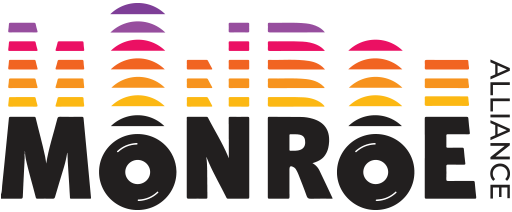Partner:
The exponential growth of mobile applications and the adoption of mobile connectivity by end users is driving the growth of 4G, which will be soon followed by 5G. Mobile providers will need the highest speed, lowest latency and dynamic provisioning capabilities expected from 5G networks to respond to the growing demand of users and offer new services in the business and residential segments. Cisco VNI (Visual Network Index) [1] anticipates that 5G will account for 1.5 percent of total mobile data traffic on a global scale in 2021 and will generate 4.7 times more traffic than the average 4G connection and 10.7 times more traffic than the average 3G connection.
Traditionally, network optimization process has been focused on improving the network performance for a specific network segment, for example, the radio access network. Thus, classic optimization algorithms are based on indicators that provide information about the lowest layers for the considered segment. However, the classic performance indicators are incapable of covering the perception of the end-user experience. Nowadays, this objective is changing, and new optimization techniques are focused on optimize the user experience. These new methods present user-centric approaches and performe the optimization considering all possible segments of the network.
In the literature, different studies related to the optimization of the QoE perceived by users for different types of services can be found. Some authors address the optimization of the QoE perceived by customers from an application layer perspective. Thus, in articles such as [2] and [3], metrics as the video initial time, the receptor buffer state or the application bitrate are used to compute the QoE and perform the optimization of a video streaming service. In [4], an algorithm to adapt the bitrate of a video streaming service in a dynamic way is proposed. The algorithm is based on the QoE experienced by users and the application layer buffer occupancy. However, other authors address the issue from lower layers perspective. Authors in [5] and [6] propose the use of new schedulers based on the QoE perceived by customers of real-time video streaming and web services. In [7], the QoE experienced by the users of a 3G voice call service is optimized by adjusting the tilt of the antennas.
In this project, an exhaustive study of the influence of radio access parameters on end-to-end (E2E) user experience is proposed. Since operators only have a partial view of the whole communication path (the core network -CN- and the radio access network -RAN-, excluding user equipments -UE-), the eSON proposal is based on the exhaustive capture of data of the radio layers at the user devices while knowing and controlling the configuration parameters of the radio network.
Specifically, the main objective of eSON can be divided into two objectives. The first one is related to the optimisation of E2E performance by modifying RAN configuration parameters. The second main objective consists in a HW extension to the MONROE platform which adds an experimental LTE network to the platform. This general objective can be divided into some specific goals:
- To perform a measurement campaign using the MONROE platform. The set of measurements collected in this measurement campaign has been used as baseline to address the following goals. The use of these data has been essential to cope with the E2E optimization task.
- Based on the data collected as a result of the first goal, the second one objective is to model the network performance under different conditions. The network modelling has been carried out both in a simulated and in a real environment. In the latter case, the UMAHetNet (see chapter 2 for more details) that is proposed as a HW extension has been used.
- Once the most significant scenarios have been modelled, the E2E performance could be optimized by modifying some configuration parameters of the network. This goal pretends to define and implement such algorithms by simulations and with the UMAHetNet.
- Regarding the HW extension, to connect the MONROE node to the UMAHetNet and developed the necessary software to provide connection to all experimenters of the MONROE platform.
Open Source code is available here:
https://github.com/baenaedu/nettest-xlayer
[1] Cisco, Cisco Visual Networking Index: Global Mobile Data Traffic Forecast Update, 2016â2021, 2017.
[2] I. Triki, R. El-Azouzi, M. Haddad, Q. Zhu and Z. Xu, “Learning from experience: A dynamic closed-loop QoE optimization for video adaptation and delivery,” in 2017 IEEE 28th Annual International Symposium on Personal, Indoor, and Mobile Radio Communications (PIMRC), 2017.
[3] J. Song, Y. Cui, Z. Li, Y. Bao, L. Zhang and Y. Zhang, “EDASH: Energy-Aware QoE Optimization for Adaptive Video Delivery over LTE Networks,” in 2016 25th International Conference on Computer Communication and Networks (ICCCN), 2016.
[4] P. Zhao, D. Meng and X. Yang, “A stochastic optimization-based bitrate adaptation for QoE maximization in wireless video streaming,” in 2016 2nd IEEE International Conference on Computer and Communications (ICCC), 2016.
[5] S. Y. Yoon, S. Lee, Y. Kim, P. Lee, C. Y. Oh, I. Youn, E. Monroy, Z. Hasany and J. Choi, “Mobile data service QoE analytics and optimization,” in 2015 IEEE International Conference on Communication Workshop (ICCW), 2015.
[6] A. Mehrabi, M. Siekkinen and A. Ylä-Jääski, “Joint optimization of QoE and fairness through network assisted adaptive mobile video streaming,” in Wireless and Mobile Computing, Networking and Communications (WiMob),, 2017.
[7] V. Pedras, M. Sousa, P. Vieira, M. P. Queluz and A. Rodrigues, “Antenna tilt optimization using a novel QoE model based on 3G radio measurements,” in Wireless Personal Multimedia Communications (WPMC), 2017 20th International Symposium on, 2017.

